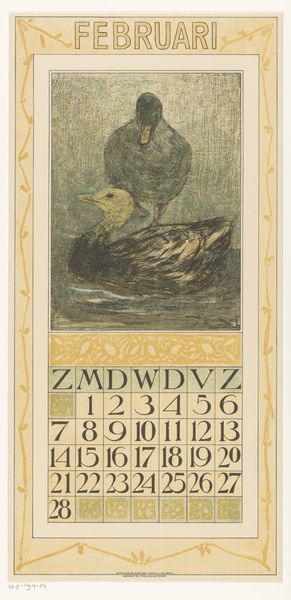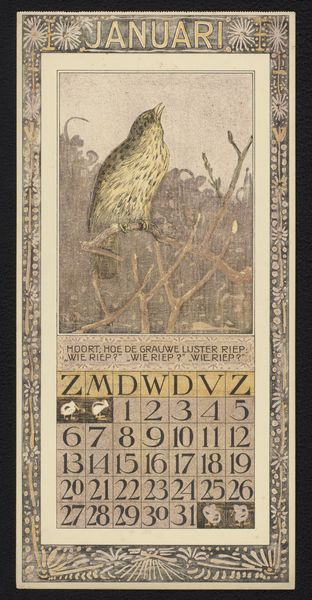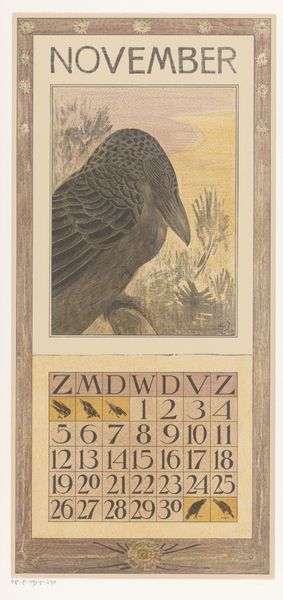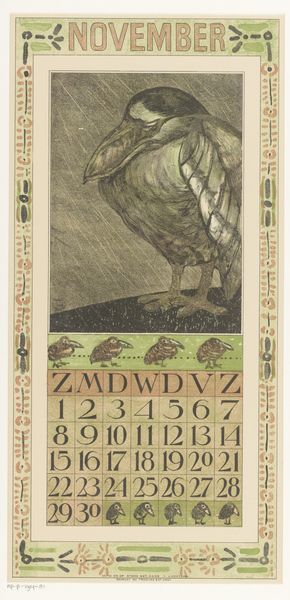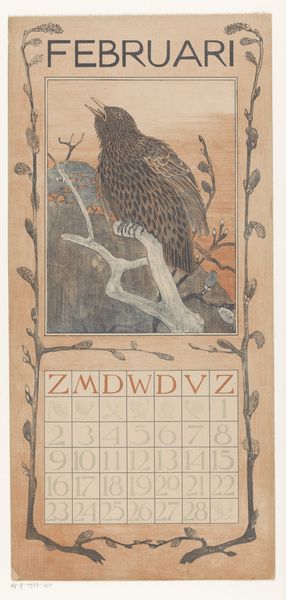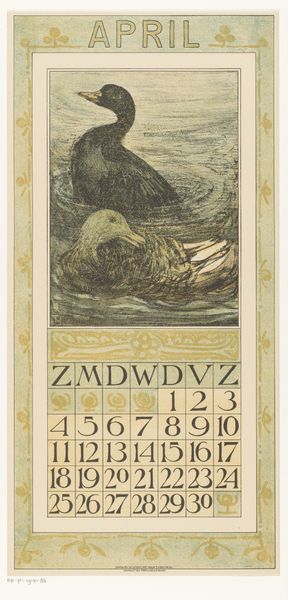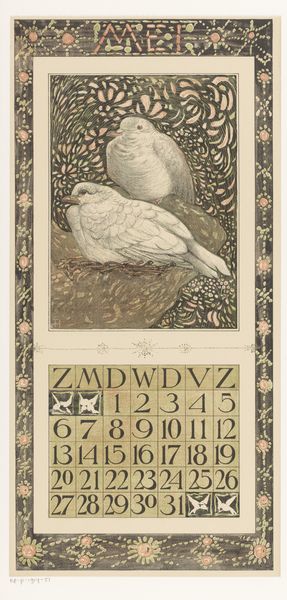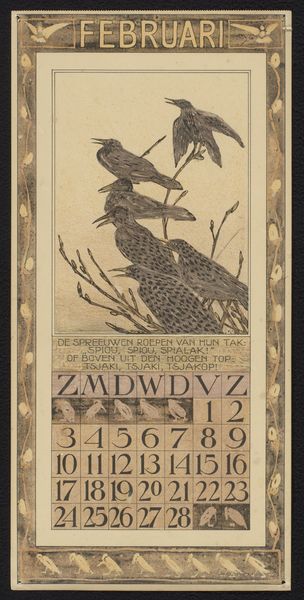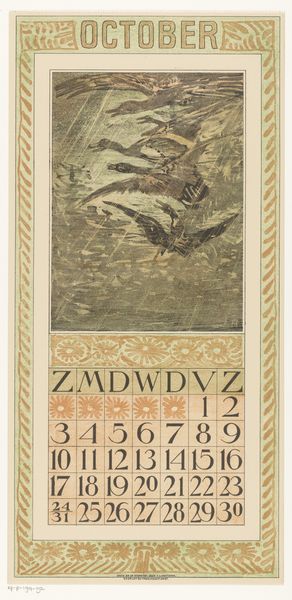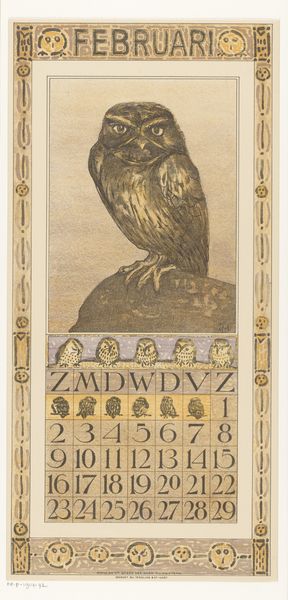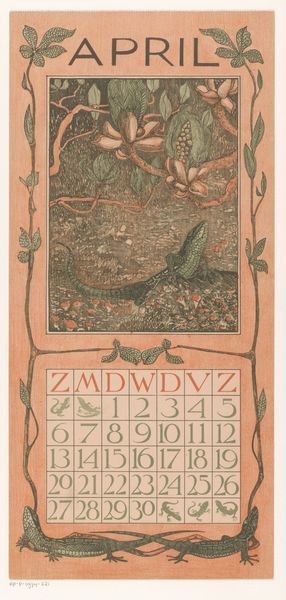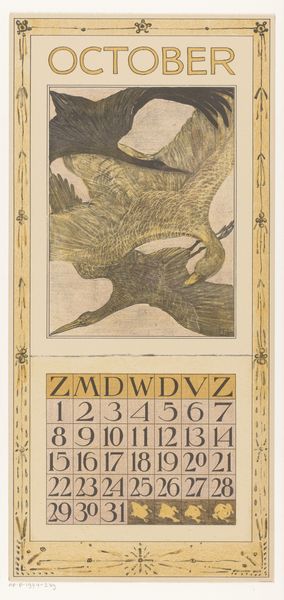
Dimensions: height 440 mm, width 210 mm
Copyright: Rijks Museum: Open Domain
Curator: This is Theo van Hoytema’s “Kalenderblad juni met eend met kuikens” from 1908, currently held at the Rijksmuseum. It’s a lithograph print. Editor: My immediate impression is of serenity and quiet observation. There's a gentle realism combined with a graphic, almost miniature quality. Curator: The formal structure relies on strong verticality – the upright stance of the mother duck, the linear reeds, even the overall format of the calendar contributes. This echoes the art nouveau obsession with upward growth and organic form. Look closely at how Hoytema uses the decorative border— it mimics natural motifs to emphasize this ascent. Editor: It certainly invokes art nouveau, but filtered through a distinct sensibility for Dutch realism. It’s a glimpse into a specific ecosystem and its inhabitants at a particular moment. Consider the role of women within naturalist aesthetics. The representation of motherhood as both nurturing and constrained appears widely during this period, not unlike the visual symbolism found in art celebrating agrarian life. How might gender inform the framing of “nature” in works like these? Curator: It’s undeniable that Hoytema’s background as a scientific illustrator played a significant role. The print exhibits accurate and meticulous depictions of the duck's anatomy and its interaction with its environment. It isn't a romantic idealization but a careful study. Editor: But whose gaze does that "careful study" serve? The duck becomes a visual specimen, presented within a patriarchal system of knowledge. Also, printing and calendars have the practical purpose of making time into measurable segments and ordering social behavior, including regulating human interaction with the seasons. This image idealizes family at the very moment when industrial capitalism requires labor flexibility rather than rootedness. The tension makes for compelling study. Curator: An interesting interpretation, I admit! But let us also appreciate its sophisticated printing technique and the visual harmonies it creates through relatively muted coloring, a far cry from other prints of the era. Editor: Ultimately, "Kalenderblad juni met eend met kuikens" gives us space for reflecting on our connection to the natural world as something complex, personal, but always mediated through power.
Comments
No comments
Be the first to comment and join the conversation on the ultimate creative platform.
